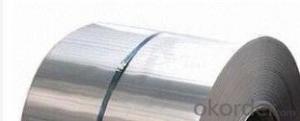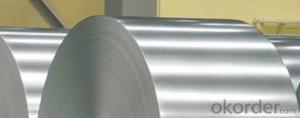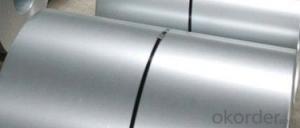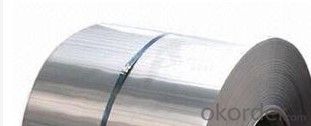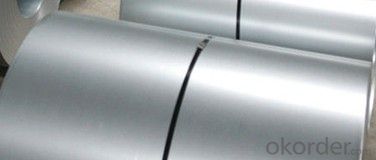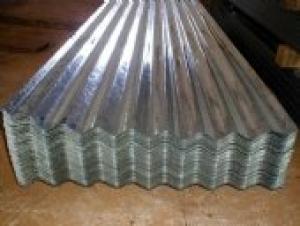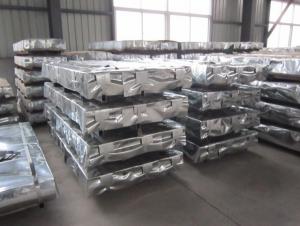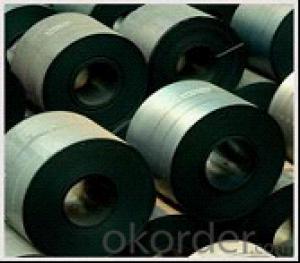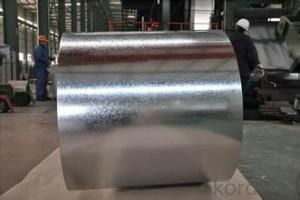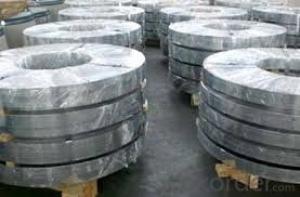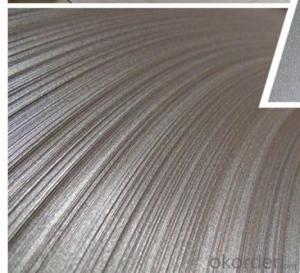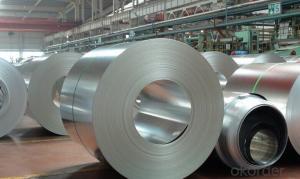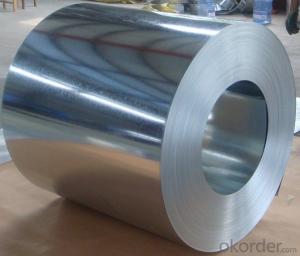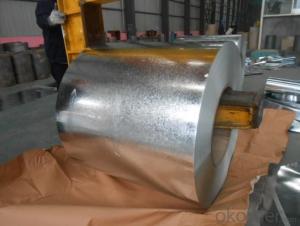GALVANIZED STEEL COIL-SHEET WITH BEST SELLING
- Loading Port:
- Tianjin
- Payment Terms:
- TT OR LC
- Min Order Qty:
- 25 m.t.
- Supply Capability:
- 20000 m.t./month
OKorder Service Pledge
OKorder Financial Service
You Might Also Like
Hot Dipped Galvanized Steel Coils -Sheet with best selling
Product Description
1.What we can supply
Size | (0.13mm-5.0mm )*(600mm-1500mm)*coil |
Steel Grade | JIS G3302 SGCC~SGC570,SGCH(FULL HARD-G550),SGHC~SGH540 EN 10346-DX51D+Z,DX53D+Z, S250GD~S550GD ASTM A653M CS-B, SS255~SS550 |
Coil Weight | 3MT-14MT |
Coil ID | 508mm/610mm |
Chemical Treatment | Chromated(Cr 3+,6+,0+) |
Surface | Skin pass/non skin pass |
Oil | Slight Oiled/Dry |
Spangle | Regular/Zero/Big |
Zinc Coating | Z40-Z300 |
Capacity | 1,500,000MT/year |
Mill Origin | HBIS-Tangsteel,Shandong Zhongguan, Changshu Everbright, WISCO |
2.Chemical compositon:
STEEL GRADE | CHEMICAL COMPOSITION % | MECHANIC PROPERTY | C.B OF COATING | COATING | ||||||||||
C | Si | Mn | S | P | T.S | Y.S | E.L | |||||||
x103 | x103 | x102 | x103 | x103 | Mpa | Mpa | % | d=0 180° | G/M² | |||||
JIS G3302 SGCC | 12 | 30 | 41 | 31 | 21 | 480 | 300 | 13 | OK | Z60-150 | ||||
JIS G3302 SGCH | 12 | 10 | 21 | 18 | 8 | 680 | 650 | OK | Z60-150 | |||||
ASTM A653 CS.B | 20 | 30 | 60 | 35 | 30 | 386 | 205~380 | 20 | OK | Z80-275 | ||||
DX51D+Z | 29 | 21 | 18 | 1.8 | 11 | 355 | 245 | 38 | OK | Z80-275 | ||||
Packaging & Shipping
1.Packing
plastic film +water proof paper + steel plate+ packing steel strip
2.Shipping
cnbm has her own logistic company who will provide professional service in vessel booking, insurance covering, loading, storaging, documentation. Creating the complete service chain for trading and logistic
1.Sample
Sample free and postage paid.
2.SGS inspection
SGS inspection for free, if quantity is over 500MT/order.
3.Steel Processing
cnbm provide additional service in steel bending, pounching, lasher cutting, welding, forming, designation, installation
- Q: Are steel sheets resistant to rust or corrosion?
- Yes, steel sheets are resistant to rust or corrosion due to the presence of protective coatings or alloys that prevent the metal from oxidizing when exposed to moisture or other corrosive elements.
- Q: What are the different packaging options for steel sheets?
- Some of the different packaging options for steel sheets include bundles, coils, pallets, and crates. Bundles are typically used for smaller sheets and consist of multiple sheets stacked together and secured with metal straps. Coils are used for larger sheets and are wound into a cylindrical shape. Pallets are commonly used for transportation and storage, where steel sheets are placed on top of a wooden or plastic pallet and secured with straps or stretch film. Crates are wooden or metal containers that provide additional protection for steel sheets during transportation and can be customized to fit specific sheet sizes and quantities.
- Q: Are the steel sheets resistant to graffiti or vandalism?
- Yes, steel sheets are typically resistant to graffiti and vandalism due to their durable and non-porous surface, making it difficult for paint or markers to adhere to them.
- Q: How to choose welding method for welding different plate and thick steel plate?
- How to choose welding method for welding different plate and thick steel plate?:It depends on what process you use welding: manual arc welding, thick plate side should do thinner processing, become 12 thick, that is, a transition ramp, 15 degrees can be reached, two plates corresponding to the edge of the same thickness. V shaped groove, single side 30 meter, V shape 60 degrees. Clearance 2, blunt edge 1-2 can. Submerged arc welding, the plate can be assembled after thinning, without beveling.
- Q: How is the normalized steel plate produced?
- The main purpose of normalizing is to refine the structure, to improve the properties of the steel, and to obtain a structure close to the equilibrium state. Compared with the annealing process, the main difference between normalizing and annealing is that the cooling rate of normalizing is a little faster, so the production cycle of positive heat treatment is short. Therefore, when annealing and normalizing can meet the performance requirements of parts, normalizing shall be used as much as possible. Most medium and low carbon steel billets are usually treated with positive heat. General alloy billet material often adopts annealing, if normalizing, because the cooling rate is faster, make its normalizing higher hardness, is not conducive to cutting.
- Q: Can steel sheets be used for electrical motors?
- Yes, steel sheets can be used for electrical motors. Steel is commonly used in the construction of motor cores as it provides high magnetic permeability, low hysteresis, and low eddy current losses, which are essential for efficient operation of electrical motors.
- Q: Can steel sheets be used for manufacturing storage racks or shelves?
- Yes, steel sheets can be used for manufacturing storage racks or shelves. Steel is a durable and strong material that can withstand heavy loads, making it suitable for constructing storage racks or shelves that need to support various items. Additionally, steel sheets can be easily shaped and customized to accommodate different sizes and designs, making them highly versatile for manufacturing storage solutions.
- Q: Can steel sheets be recycled multiple times?
- Yes, steel sheets can be recycled multiple times. Steel is one of the most recycled materials in the world due to its durability and recyclability. When steel sheets reach the end of their useful life, they can be collected, melted down, and reprocessed into new steel products. This process can be repeated numerous times without compromising the quality of the steel. Recycling steel sheets not only conserves natural resources but also reduces energy consumption and greenhouse gas emissions associated with the production of new steel.
- Q: Are steel sheets resistant to mold and mildew?
- No, steel sheets are not resistant to mold and mildew.
- Q: Are steel sheets suitable for marine applications?
- Yes, steel sheets are suitable for marine applications. Steel is known for its high strength and durability, making it ideal for withstanding the harsh conditions of marine environments, such as saltwater corrosion, extreme temperatures, and physical impact. Additionally, steel sheets can be specially treated or coated to enhance their resistance to corrosion and increase their lifespan in marine applications.
Send your message to us
GALVANIZED STEEL COIL-SHEET WITH BEST SELLING
- Loading Port:
- Tianjin
- Payment Terms:
- TT OR LC
- Min Order Qty:
- 25 m.t.
- Supply Capability:
- 20000 m.t./month
OKorder Service Pledge
OKorder Financial Service
Similar products
Hot products
Hot Searches
Related keywords
